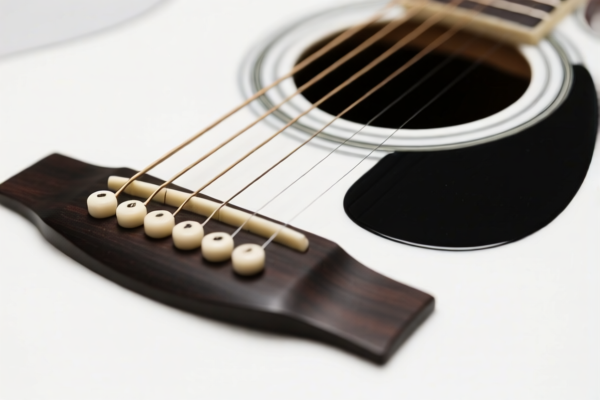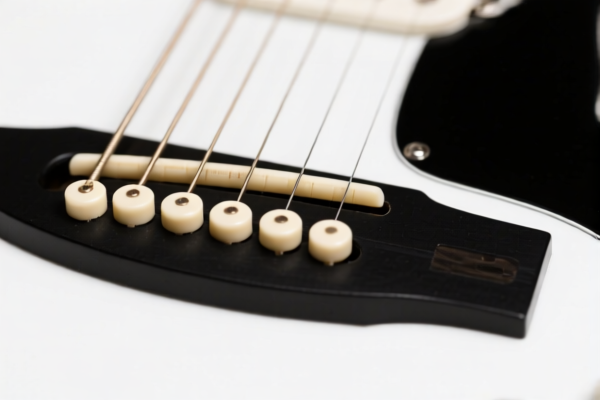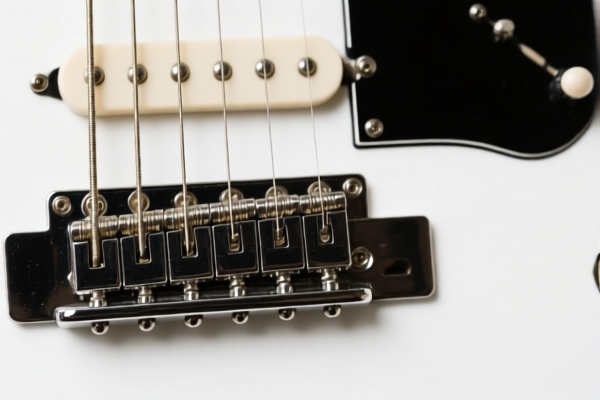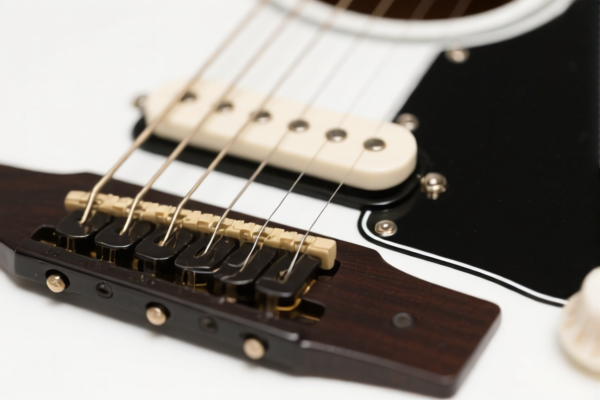| HS Code | Official Doc | Tariff Rate | Origin | Destination | Effective Date |
|---|---|---|---|---|---|
| 9209928000 | Doc | 42.1% | CN | US | 2025-05-12 |
| 9209998000 | Doc | 42.8% | CN | US | 2025-05-12 |
| 9202902000 | Doc | 42.0% | CN | US | 2025-05-12 |
| 9202904000 | Doc | 46.2% | CN | US | 2025-05-12 |
| 8548000000 | Doc | 55.0% | CN | US | 2025-05-12 |




Bridge
A bridge is a fundamental component of a guitar, responsible for transmitting string vibrations to the body of the instrument, influencing both tone and intonation. It also anchors the strings at the body end of the guitar.
Material
Bridges are constructed from a variety of materials, each contributing to distinct tonal characteristics:
- Wood: Rosewood, maple, and ebony are common choices, offering warmth and a balanced tone.
- Metal: Brass, steel, and zinc alloys are frequently used, providing brighter tones and increased sustain.
- Synthetic Materials: Tusq and other composites aim to replicate the tonal properties of wood while offering greater consistency and stability.
Purpose
- String Termination: Provides a secure anchor point for the strings.
- Vibration Transfer: Transfers the energy of the vibrating strings to the soundboard (top) of the guitar.
- Intonation Adjustment: Allows for precise adjustment of string length to ensure accurate pitch across the fretboard.
- Sustain and Tone Shaping: The mass, density, and material of the bridge significantly affect the guitar’s sustain, brightness, and overall tonal character.
Function
The bridge functions as a mechanical interface. Strings pass over the saddle(s) of the bridge, and their vibrations are transferred through the bridge to the soundboard. The soundboard then vibrates, amplifying the sound. The bridge's design impacts how efficiently this energy is transferred, and therefore the loudness and quality of the sound produced.
Usage Scenarios
Bridges are essential for all types of guitars:
- Acoustic Guitars: Bridges are typically glued directly to the soundboard.
- Electric Guitars: Bridges can be fixed, floating, or tremolo systems, each offering different levels of sustain, vibrato capabilities, and tuning stability.
- Bass Guitars: Similar to electric guitars, bass bridges come in various configurations to suit different playing styles and tonal preferences.
Common Types
- Acoustic Guitar Bridges:
- Standard/Rosewood Bridge: The most common type, glued to the soundboard.
- Pin Bridge: Uses bridge pins to secure the strings.
- Mustache Bridge: Features a slotted design for string attachment.
- Electric Guitar Bridges:
- Fixed Bridge: Provides maximum sustain and tuning stability. Examples include hardtail bridges and Tune-o-matic bridges.
- Tremolo Bridge (Vibrato Bridge): Allows for pitch bending effects. Examples include Stratocaster-style tremolos, Floyd Rose tremolos, and Bigsby tremolos.
- Floating Bridge: Not directly attached to the body, allowing for wider pitch range and more dramatic vibrato effects.
- Bass Guitar Bridges:
- Precision Bass Bridge: A common, simple design.
- Jazz Bass Bridge: Offers individual string adjustment for precise intonation.
- Through-Body Bridge: Strings pass through the body of the guitar, enhancing sustain and tone transfer.
Guitar accessories, specifically a bridge, fall under the classification of parts and accessories for musical instruments. Here are the relevant HS codes based on the provided information:
- 9209928000: Parts (for example, mechanisms for music boxes) and accessories (for example, cards, discs and rolls for mechanical instruments) of musical instruments; metronomes, tuning forks and pitch pipes of all kinds: Other: Parts and accessories for the musical instruments of heading 9202: Other. This code covers parts and accessories for musical instruments, with a base tariff of 4.6%, an additional tariff of 7.5%, and a tariff of 30% after April 2, 2025, resulting in a total tariff of 42.1%.
- 9209998000: Parts (for example, mechanisms for music boxes) and accessories (for example, cards, discs and rolls for mechanical instruments) of musical instruments; metronomes, tuning forks and pitch pipes of all kinds: Other: Other: Other. This is a broader category for other parts and accessories, with a base tariff of 5.3%, an additional tariff of 7.5%, and a tariff of 30% after April 2, 2025, resulting in a total tariff of 42.8%.
It is important to note that the applicable tariff will depend on the specific characteristics of the bridge and whether it is specifically designated as a part for instruments under heading 9202.
Customer Reviews
No reviews yet.